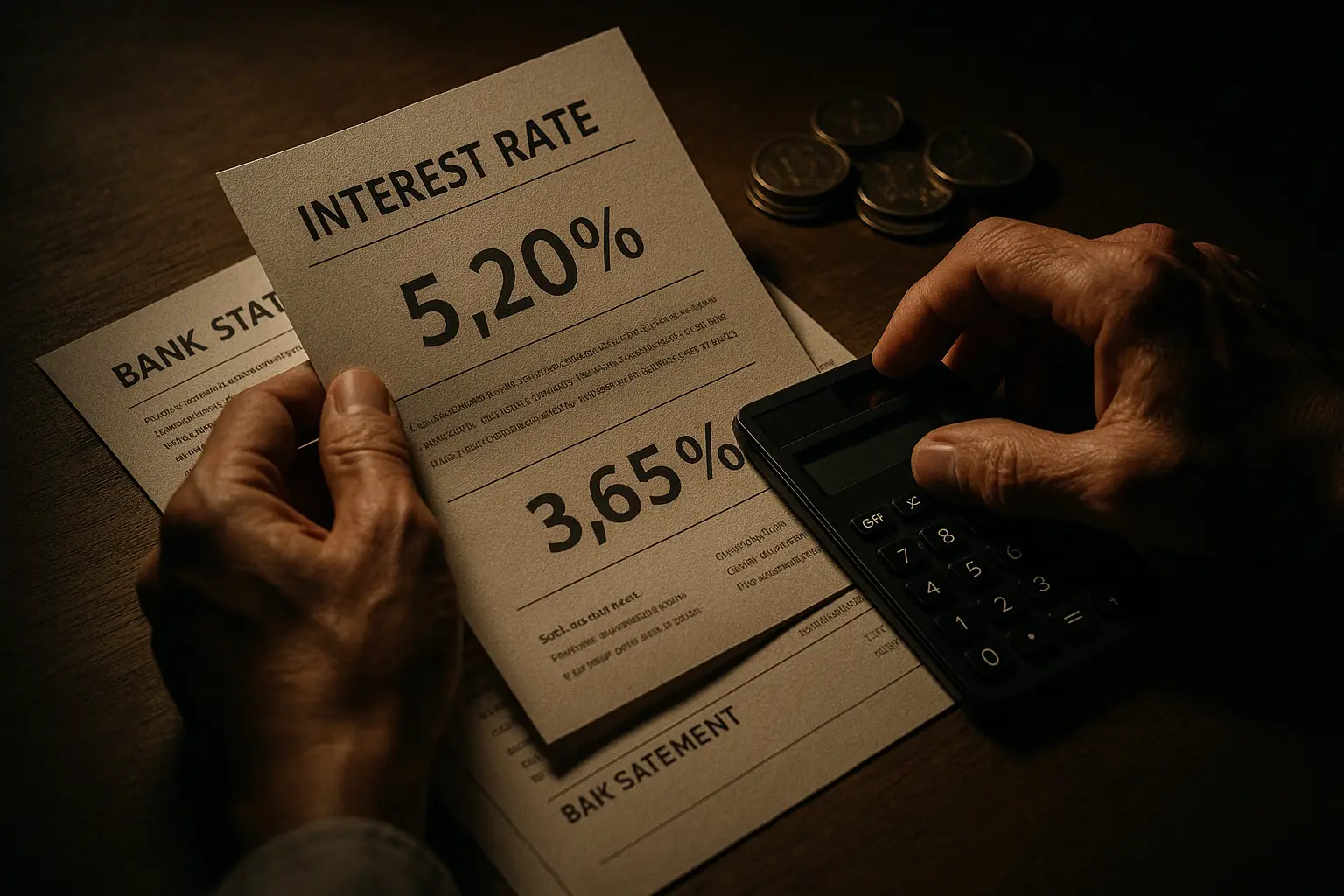Best savings accounts UK: Expert guide to UK providers and deals
Finding the best savings account in the UK means comparing interest rates, access options, and provider reliability to maximise your returns. As of October 2025, top easy access accounts offer up to 4.75% AER, while fixed-rate deals hit 4.5% for one-year terms, according to MoneySavingExpert. This guide breaks down the best UK savings accounts by type, helping you choose based on your needs like liquidity or tax efficiency.
Understanding savings accounts in the UK
Savings accounts in the UK are protected up to £85,000 per person per institution by the Financial Services Compensation Scheme (FSCS), ensuring your money is safe even if a provider fails. Key types include easy access for flexible withdrawals, fixed-rate bonds for locked-in higher returns, and specialised options like Cash ISAs for tax-free growth. Interest is quoted as AER (Annual Equivalent Rate), which shows the true yearly return accounting for compounding.
Types of savings accounts
The best savings accounts suit different goals: easy access for everyday funds, fixed-rate for sums you won’t need soon, and regular savers for building habits with bonuses. Online providers often lead with competitive rates, but always check minimum deposits and withdrawal rules. For instance, the best high interest savings account UK can yield over 4% AER without penalties.
FSCS protection and safety
All authorised UK banks and building societies fall under FSCS cover, safeguarding deposits up to £85,000. This scheme, run by the government-backed Financial Services Compensation Scheme, steps in if a provider goes bust, returning your money quickly. Avoid exceeding limits by spreading savings across institutions.
Tax rules: PSA and ISAs
Basic rate taxpayers enjoy a £1,000 Personal Savings Allowance (PSA), meaning no tax on interest up to that amount, per HMRC guidelines. Higher earners get £500, while additional rate taxpayers pay tax on all interest. Opt for a Cash ISA, with a £20,000 annual allowance, to shield earnings from tax entirely—ideal for the best tax-free savings account UK.
Top easy access savings accounts
The best easy access savings account UK prioritises flexibility with rates up to 4.75% AER in October 2025, allowing penalty-free withdrawals anytime. Providers like Chase and Cynergy Bank top lists for instant access, often via apps for quick management. These suit emergency funds but may drop rates if the Bank of England base rate falls.
Highest rates October 2025
Current leaders include accounts from online banks offering 4.5-4.75% AER on balances up to £85,000. Moneyfacts reports daily updates, with top picks at 4.56% AER overall. Compare via their tool for the best instant access savings account UK tailored to your deposit size.
| Provider | AER (%) | Min Deposit | Max Balance |
|---|---|---|---|
| Chase UK | 4.75 | £0 | £3,000,000 |
| Cynergy Bank | 4.70 | £1 | £250,000 |
| RCI Bank | 4.65 | £100 | £1,000,000 |
Source: Moneyfacts (accessed 27 October 2025). Rates variable and subject to change.
Provider comparisons and pros/cons
- Pros of easy access: Liquidity for the best online savings account UK; no lock-in.
- Cons: Rates may lag fixed options; potential for drops in 2025 if base rate eases.
For detailed rates, see our best savings account rates guide.
Best fixed-rate savings options
Fixed-rate bonds lock your money for a set period, offering stability with rates up to 4.5% AER for one year in 2025. Ideal for lump sums, these beat inflation if held long-term, but early withdrawals incur penalties. Money To The Masses highlights top one-year deals for predictable returns.
One-year and longer terms
The best fixed rate savings account UK for six months yields around 4.2% AER, rising to 4.5% for 12 months. Longer terms like two years can hit 4.3%, but shop around as rates may soften post-2025 Bank of England decisions.
Suitability for lump sums
These suit savers with £5,000+ not needed soon. Check for FSCS cover across terms.
Niche accounts: Child, joint, regular and tax-free
Specialised accounts target families or builders: the best child savings account UK like Junior ISAs grow tax-free for under-18s, with rates up to 4.5% AER. Joint options split allowances for couples, while regular savers reward monthly deposits with bonuses up to 6-7% effective rates.
Best for children and Junior ISAs
Providers like Coventry Building Society offer 4% AER on kids’ accounts. For long-term, Junior ISAs from MoneySavingExpert recommendations build habits early.
Explore more in our best savings account for children article.
Joint and regular saver benefits
Joint accounts double PSA to £2,000 for couples. Regular savers from NatWest cap at £250/month but add bonuses, per Which? surveys.
High-interest and expert picks
Online providers dominate the best high yield savings account UK with 4.8% AER tops, per MoneySuperMarket. Martin Lewis-style advice emphasises switching for top rates without loyalty. Ethical options like Triodos Bank offer 4% AER with green focus, filling gaps in mainstream lists.
For expert insights, check Martin Lewis best savings account guide.
How to choose and switch savings accounts
Assess your goals: liquidity for easy access, growth for fixed. Use comparison sites like Which? for eligibility. Switching is simple via CASS rules for easy access, often with bonuses—boost returns by 0.5% instantly.
Savings tips for 2025
With base rate at 5% potentially falling, ladder fixed terms to hedge. Inflation at 2% means real returns of 2.5% on top deals. Diversify into ISAs for tax perks, projecting £200+ extra yearly on £10,000 saved.
Frequently asked questions
What is the best easy access savings account in the UK?
The best easy access savings account UK currently offers up to 4.75% AER from providers like Chase, allowing unlimited withdrawals without penalty. This suits those needing flexibility for emergencies or short-term goals, but rates are variable and tied to Bank of England changes. Compare via Moneyfacts for options matching your balance, ensuring FSCS protection.
How much interest can I earn on savings?
On a £10,000 deposit at 4.5% AER, you’d earn about £450 yearly before tax, compounding to more over time. Factors like account type and your tax band affect net gains—basic rate taxpayers keep most via PSA. Use calculators from Money To The Masses to project based on 2025 rates, aiming for high-interest accounts to beat inflation.
What is AER in savings?
AER stands for Annual Equivalent Rate, a standardised figure showing the effective yearly interest including compounding, making comparisons straightforward. Unlike gross rates, AER accounts for daily or monthly payouts, so a 4% AER might mean more than a simple 4% quoted elsewhere. Always check AER on provider sites like Cynergy Bank for accurate best savings account interest rates UK.
Are savings accounts safe in the UK?
Yes, UK savings accounts are safe up to £85,000 per institution via FSCS protection, covering authorised banks and building societies. Even in a provider failure, funds are returned promptly without loss. Spread larger sums across multiple providers and stick to FSCS members, as verified by the official scheme website.
What’s the best savings account for a child?
The best child savings account UK is often a Junior ISA with up to 4.5% AER tax-free, from providers like Coventry, accessible at 18. These encourage long-term saving for education or homes, with no withdrawal until maturity. Parents control until then; compare rates on Which? for high customer scores and low minimums starting at £1.
What is the best fixed rate savings account UK for 2025?
For 2025, top fixed-rate deals offer 4.5% AER on one-year bonds from RCI Bank, suiting lump sums with no access needs. Longer terms may yield slightly less but provide stability amid rate cuts. Monitor Bank of England announcements, as projections suggest mild declines; use be Clever with Your Cash for updates.
How do I maximise returns on the best high interest savings account UK?
To maximise, switch to top AER deals regularly, using bonuses from providers like First Direct, and combine with ISAs for tax savings. Avoid low-rate current accounts; a £20,000 shift to 4.75% could add £950 yearly. Track via apps and diversify to mitigate rate drops in 2025.





